- Home
- [Aji Stone]


- ■ The Three Great Granite Production Sites of Japan
-
Makabe in Ibaraki Prefecture, Okazaki in Aichi Prefecture, and of course, Aji in Kagawa Prefecture, are Japan’s three major granite production sites. Each of the sites has particular defining characteristics:
Makabe has from its inception produced its now illustrious black mica granite, known as Inada Granite, and now boasts of its abundant production of a wide variety of stones. In Okazaki, where they can say they have been dealing in crafted stone goods for over a thousand years, famous types of stone such as Hanazawa Stone and Asuke Granite, all exceptional for carving, are produced.
But among these renowned sites, the one known for the highest quality and most extraordinary work is right here in Aji. Aji Stone is not just famous for its impressive durability, but also for its beautiful and entirely unique “speckled” pattern. The Aji site is the sole producer of this special stone, not just in Japan, but throughout the world.

- ■ The Aji Stone Production Site
-
The Aji site is located in Takamatsu, Kagawa Prefecture, within the towns of Aji and Mure at the foot of Mt. Yakuri-Goken. The site straddles the boundaries of both towns along the west side of the base of the mountain.
The entirety of the mountain is formed from layers of granite, and includes around fifty sacred locations that are restricted from public access.
- ■ Kagawa Prefecture
-
Kagawa is Japan’s smallest prefecture. Within this relatively small space however, a great number of charms exist.
Recently, the Setouchi International Art Festival’s opening has highlighted the various islands of the Seto Inland Sea with a great number of unique art exhibits. The warm climate and infrequent rain are a bonus.
It is in this calming place where both rich tradition and fresh, new culture breathe as one, that Aji Stone is nurtured.
- ■ Yakuri-Goken Mountain
-
The mountain’s elevation is 375 meters. Five peaks stab upwards like swords in a row from which the mountain gets its name, Goken or “five swords.” One of the eastern peaks was leveled in a massive earthquake during the fourth year of the Houei Era (1707), however a distinct valley belonging to it can even now be clearly seen. The mountain’s summit features the 85th temple site of the Shikoku Henro Pilgrimage, Mt. Goken’s Yakuri Temple. Many of the pilgrims who visit while traveling the famous route refer to the area with a hint of affection as Mt. Yakuri.
- ■ Characteristics of Aji Stone
-
Aji Stone, as well as being one of Japan's three great granite varieties, has earned appreciation worldwide, along with the nickname "diamond granite." Thanks to its remarkably fine grain, it is incredibly resistant to wind damage, and the more it is polished, the more it gleams. Its proper name is “fine grained biotite granodiorite,” and it is primarily composed of quartz and feldspar. It gets its rare “speckled” pattern from a small amount of black mica that is also part of its composition. Granite is divided into grades of fine, medium, and coarse, with Aji Stone being in the fine to medium range. The finest grained Aji Stone with its elegantly detailed patterns is naturally reserved for use in very valuable items. Furthermore, Aji Stone is also known for its near crystal-like hardness. Due to its exceptional toughness, letters carved into the stone will not crumble even 200 years after they have been etched, and both the color and the shine of the stone shall neither dull nor fade.
The crystalline structure of Aji Stone is incredibly precise, providing unique possibilities for skilled craftsmanship when using it incomparable to other types of granite. Overall, Aji Stone allows for long-lasting and beautiful lettering and design that will not deteriorate or change with time.
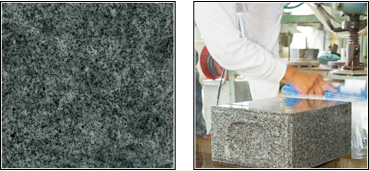
The Merits of Aji Stone
- ■ World-Renowned Unparalleled Quality
-
Since Aji Stone possesses a hardness equivalent to a grade 7 crystal, a very fine level of craftsmanship is possible, the amount of water absorption is notably low, and the stone is remarkably resistant to weathering and other environmental factors. In fact, it is so hardy that it can be safely said that in 200 years any engraved letters will still be legible, and the color will remain pure and lustrous. Today there are a great number of Aji Stone wares that remain both intact and sparkling after hundreds of years, verifying this claim.

- ■ Remarkable Hardness
-
Aji Stone formed during the Cretaceous period of the Mesozoic era (about 80 million years ago), which geologically speaking means it is relatively new granite, and the degree to which time has taken its toll is relatively low. The feldspar, quartz, mica, and other crystalized minerals exhibit amazing precision in the tightly woven composition of the stone. When compared to other granite, the hardness of Aji stone makes it much more optimal for fine craftsmanship and carving. Any lettering etched into the stone is clearly visible and easy to read.

- ■ Water Resistance
-
Due to the elaborate bonding of the crystals in the stone, the amount of water it absorbs is very low, making it much less susceptible to blemishes and weather damage.
- ■ Long-Lasting Color Purity
-
Over time, many other varieties of stone will develop a muddy color or lose their luster, however when it comes to Aji Stone, the composite minerals within the granite contain very little iron. A high concentration of iron is the usual cause for stone developing a brownish-red hue. But with Aji Stone, even after 200 years, the stone’s color will not have changed in any remarkable way.
- ■ Acid Resistance
-
Of the many kinds of granite, Aji Stone is especially resistant to chemical changes. In the case of acid rain, even with finely carved lettering, the stone almost never suffers any noticeable damage.
- ■ Texture
-
Fine-grained Aji Stone’s most notable characteristics are floating speckles and, moreover, its large flake patterns. These emerge when the face of the stone is well polished, so that the mica throughout the stone becomes visible in a dappling of black and white. When it comes to granite, Aji stone alone bears this distinction. The medium grade Aji Stone has the same speckling, however it generally lacks the same floating quality in its patterns.

- ■ Rarity
-
Yakuri-Goken Mountain is narrow and the Aji granite is hard to come by. In addition to the scarcity of good quality ore, even when mining in the same location, the area gradually changes as it is quarried, and the quality of the stone can also change in subtle ways. With regards to Aji Stone in particular, the characteristically beautiful speckling is difficult to find in any kind of abundance.
For these reasons, despite the many painstaking hours spent cutting stone from within the mountain, the percentage of material that is suitable for gravestones is very limited.
Properties of Aji Stone
ALL STONE specializes in Buddhist memorial services, from the ordering of the gravestone, to also crafting the household altar and fittings, including things such as the reciprocal gifts for funeral offerings. We also make products for rock gardens, stone lanterns, and various other sculpted goods.
We have an exhibition site available for viewing at any time that consists of our finished products. To be more specific, usually more than 300 gravestones, 200 altars, as well as numerous other goods, are on display. We currently boast the largest sales location in all of Shikoku, Japan.
Our greatest strength is that we have a dedicated manufacturing plant in Aji where our world-class production of gravestones takes place. Our staff of specialized, skilled craftsmen are always on site without a single subcontractor. The entirety of the operation from beginning to end is taken care of by our own company. As a result, we have thorough oversight of product quality and manufacturing at the source, and can provide efficient delivery to our customers.
Because our company is a direct dealer in Aji Stone, we are able to work firsthand with customers in order to ensure that the quality product they want is effortlessly supplied. Recently, thanks to the Internet, we have been able to process many orders from customers in farther away places.
Aji Stone is used in the production of notable display pieces and monuments as well.
Due to the quality and rarity of the stone, these items have a strong presence, and can be put to use in many practical ways.
Aji Stone is used in a wide variety of locations including the Hiroshima Peace Memorial Park, the stone wall memorial for atomic bomb victims located in Osaka, and the Olympic cauldron in Tokyo.
In recent years, we have done work on the rock garden at the office of the Prime Minister, supplied stone to Roppongi Hills, as well as being involved in other high profile projects.
We here at ALL STONE are also dedicated to providing Aji Stone overseas. When it comes to Aji Stone, already recognized worldwide as representative of only the highest quality of granite, you can trust in us.
Naturally, all Aji Stone includes a serial number that can be used to verify the authenticity of the stone. Our company sells directly from the Aji Stone production site, so when it comes to the veracity of the stone, you can put your faith in us. Recently we have embraced alliances with Chinese factories that have seen a rise in popularity for their granite. Our well-trained staff are always on site, inspecting and thoroughly overseeing quality control from the beginning, so that a stable, guaranteed supply of Aji stone is available.







![庵治石専門店 株式会社オールストーン[銘石 庵治石 取扱店][庵治石ネット販売 No.1][コンクール受賞]](https://www.allstone.co.jp/images/common/logo.jpg)













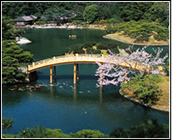
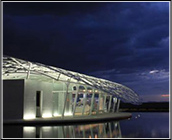
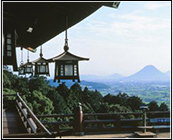
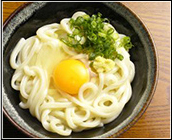
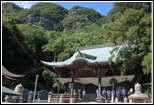
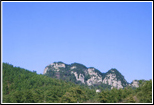



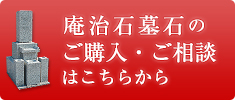

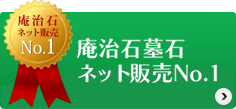
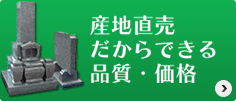

![庵治石専門店 株式会社オールストーン[銘石 庵治石 取扱店][庵治石ネット販売 No.1][コンクール受賞] お問い合わせはこちらから 0120-157-148](https://www.allstone.co.jp/images/common/footer/information.jpg)

At present, the production of Aji Stone is about 300,000 tons per year (as of 2003), but gravestones, lanterns, and sculptures only account for only 1% (3,000 tons). The rest of production goes to stone used in construction, such as foundation stones, garden stones, wall construction, ornamental stones (used for filling in land, etc.), and the like. So with this amount of stone being quarried, you may wonder why, when compared to other stone production sites, the Aji site only manufactures a small number of products. This is due to a great deal of fissures and cracks being present in the bedrock, which makes it unusually difficult to try and mine any large stones.
In the areas where medium grade Aji Stone is quarried, there are comparatively few cracks or fissures making it easier to extract large stones. However, due to the high number of cracks in the material where fine grade stone is quarried, it is much more difficult to extract larger, individual stones, so typically only smaller stones are mined. The Aji site, in general, is described as having a large number of cracks and fissures. Therefore, when extracting the stone, cracks are either used to cut along or avoided altogether. This makes the work more arduous and the Aji site can seem inefficient when compared to other sites. Furthermore, when quarried stone reaches the stages where it undergoes manufacturing, sometimes imperfections that were not noticeable before become visible, such as cracks, fissures, black spots, or other problems with the polishing or color consistency. These difficulties make completing a finished product with this stone much more challenging than with other types of stone.
Overall, Aji Stone is rare, and highly valued, and you can understand why there is a much lower yield of finished products made with it.